After five fairly cold weeks in Scotland and the north of England, the relative warmth of London in early June was very welcome. London was my home for 13 years and the memories come flooding back whenever I return for a visit.
Our apartment block in Harrington Gardens.
We stayed in an apartment just a two-minute walk from Gloucester Road underground station in South Kensington, an area where I once lived.
The streets were ablaze with colour, decorated to celebrate the late Queen’s Platinum Jubilee.
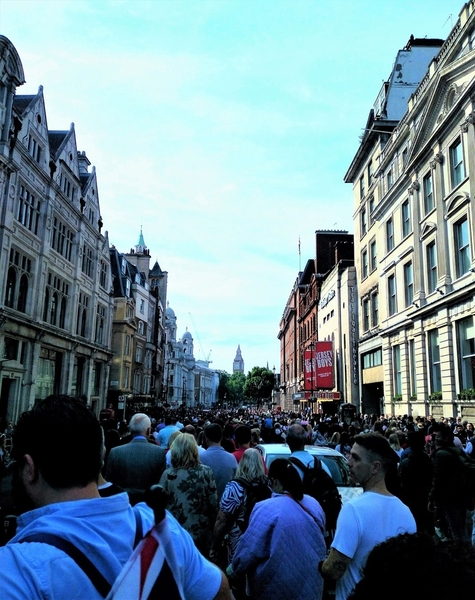

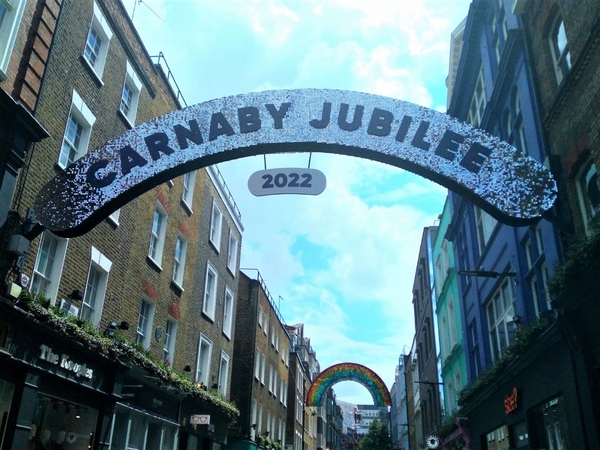
We hadn’t planned to be part of this event; the dates hadn’t even been announced when we organised the trip. But as we were there we thought we might watch the Trooping of the Colour, the annual event that has marked the birthday of the British sovereign for more than 260 years. Not a good idea. The crowds were so dense there was no chance of getting anywhere near the parade, but the pictures above give you some idea of the lively atmosphere.
We spent much of the remaining time visiting old haunts like Soho, pictured above, and we also took a look at some of London’s newer and unusual – and in some cases controversial – buildings.
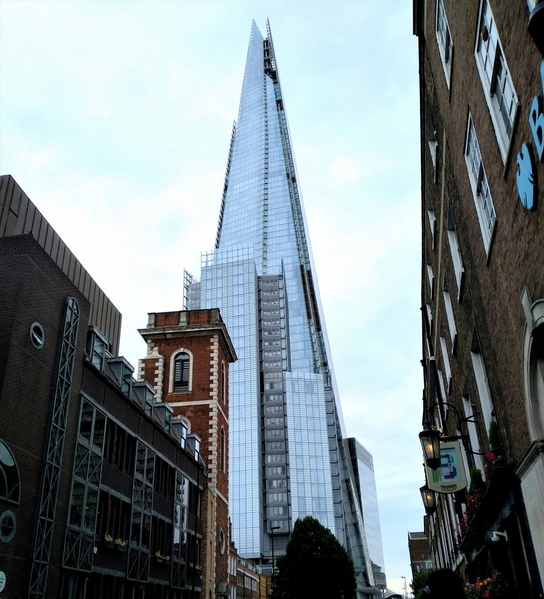
We started with The Shard at 32 London Bridge Street in the borough of Southwark. The Shard is a 72-storey skyscraper designed by Italian architect Renzo Piano, that forms part of The Shard Quarter development. Standing 309.6 metres (1,016 feet) high, The Shard is the tallest building in the UK and, for those who like to take competition to extremes, the seventh-tallest building in Europe.
Like most buildings of this magnitude, The Shard went through various crises in the planning stages relating to development approval, financing and so on, but it was finally opened to the public in February 2013.
It offers London’s highest and best view of the surrounding area on floors 68, 69 and 72. High-speed lifts carry you from level 1 to level 68 in sixty seconds. At almost twice the height of any other viewing platform in the capital, it affords visitors unparalleled 360-degree views for up to 40 miles.
The Walkie-Talkie tower at 20 Fenchurch Street was given its nickname for its distinctive top-heavy shape that is a passable likeness of a radio handset. It is possibly one the more contentious tall buildings of recent times, bulging out of the heart of historic London like the proverbial sore thumb. Designed by Uruguayan architect Rafael Viñoly, it suffered a number of setbacks and modifications before it was completed.
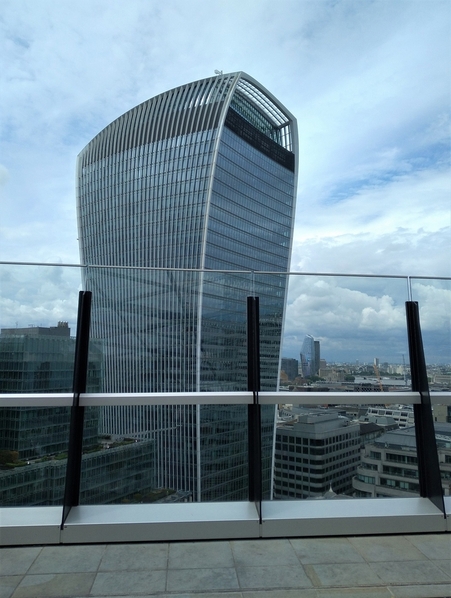
In a now infamous ‘scorching’ incident, part of a Jaguar car melted when it was hit by solar glare from the building’s convex glass façade. This was followed by stories of people gleefully stopping by and frying eggs on the pavement. Whether this actually happened or was just an urban myth, I don’t know, but the car incident certainly happened and it pointed to a problem that needed fixing.
The original design incorporated brise-soleil (sun louvres) to reduce glare, but these were dropped during modifications to the cladding. Insider London reports that, to solve the problem, a specialist from California was brought in to add brise-soleil to the façade of the tower. The specialist had good credentials having fixed a similar problem at the Vdara Hotel in Las Vegas. Viñoly designed that building as well!
Cynics claim that the bulging upper levels were designed to maximise the amount of high-value office space, in defiance of the principle that tall buildings should taper elegantly inwards, or at least have parallel sides.
At the top of the 160-metre, 37-storey tower is the sky garden, set over floors 35, 36 and 37 and offering uninterrupted views across London. It’s open to the public so we thought we’d take a look, but what we didn’t know is that it’s so popular you have to book weeks if not months in advance. Not to be outdone we headed straight for a building further up Fenchurch Street owned by the same consortium.
The Garden at 120, is located at the top of the Fen Court building at 120 Fenchurch Street and is the City of London’s largest public rooftop space. From here you can see The Shard, the Walkie-Talkie, The Gherkin (description follows) and, in the distance, the Boomerang – more on that later.
At 15 storeys, The Garden at 120 offers perfectly acceptable 360-degree views of the City and greater London and is free for members of the public to visit, with no booking required. Dedicated public lifts lead directly to the garden, which was designed by German landscape architects Latz + Partner. The garden contains 85 Italian wisteria trees, some 30 fruit trees and a 61-metre flowing water feature. It has plenty of bench seating and a coffee hut.
The Gherkin, situated at 30 St Mary Axe, is one of the capital's most famous buildings. It's a well-established feature of the London skyline, open since 2004. It contains offices, a restaurant and a cocktail bar.
The glass-fronted tower was designed by legendary British architect, Sir Norman Foster. It took two years to construct and features a distinctive spiral design.
The Gherkin is 180 metres (591ft) tall and towers 41 floors above the city. The Gherkin looks impressive by day but takes on a whole new aura when lit up at night.
The Gherkin isn’t normally open to the public but you can visit Helix restaurant and Iris bar, which are located on the top floors and have extensive panoramic views across the City of London.
One Blackfriars has several nicknames, principal of which is ‘The Boomerang’ but that didn’t cut it with these Australians. We prefer its other names which are ‘The Vase’ and ‘The Beer Gut’.
The residential tower is 50 storeys or 170 metres high and houses 274 apartments and a 161-room boutique hotel. Although not as controversial as the Walkie-Talkie, The Boomerang also has an odd shape and was designed by architect Ian Simpson. Completed in 2018, it is one of London’s newer buildings.
It has received criticism from certain quarters for its opulence, with some apartments apparently selling for as much as £23 million. No affordable housing here.
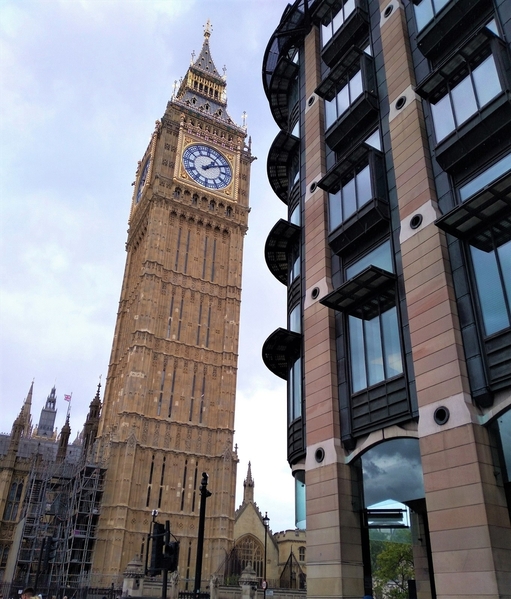
Finally, a building that everyone will recognise, not new but only recently put back into operation after a five-year restoration project. Big Ben was looking pretty smart with its new blue-painted clockface.
Photos © Judy Barford






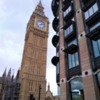
Comments (0)